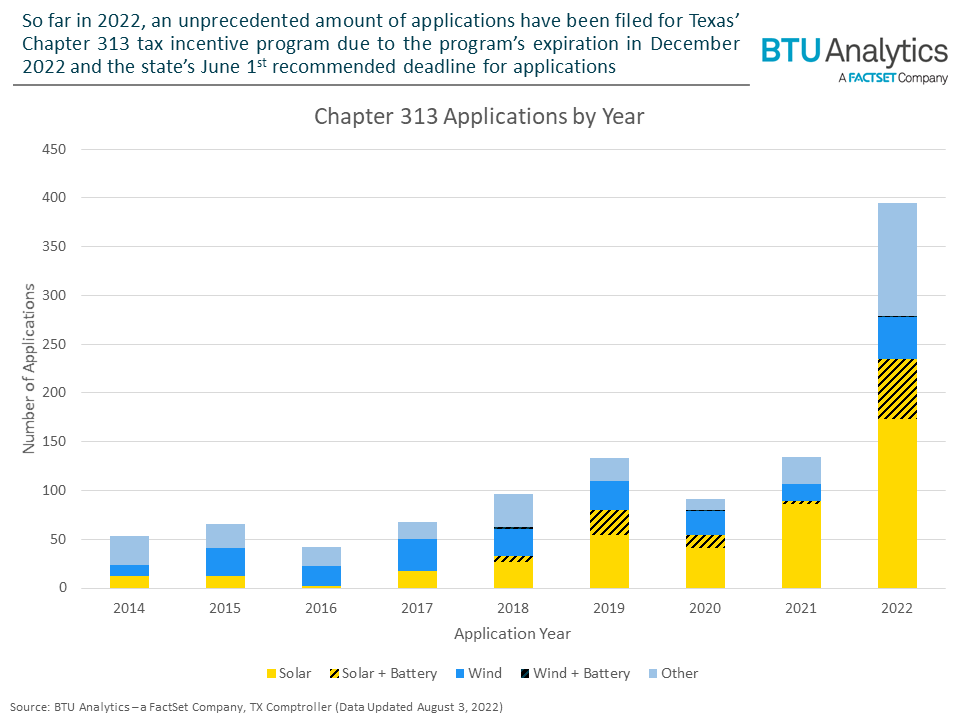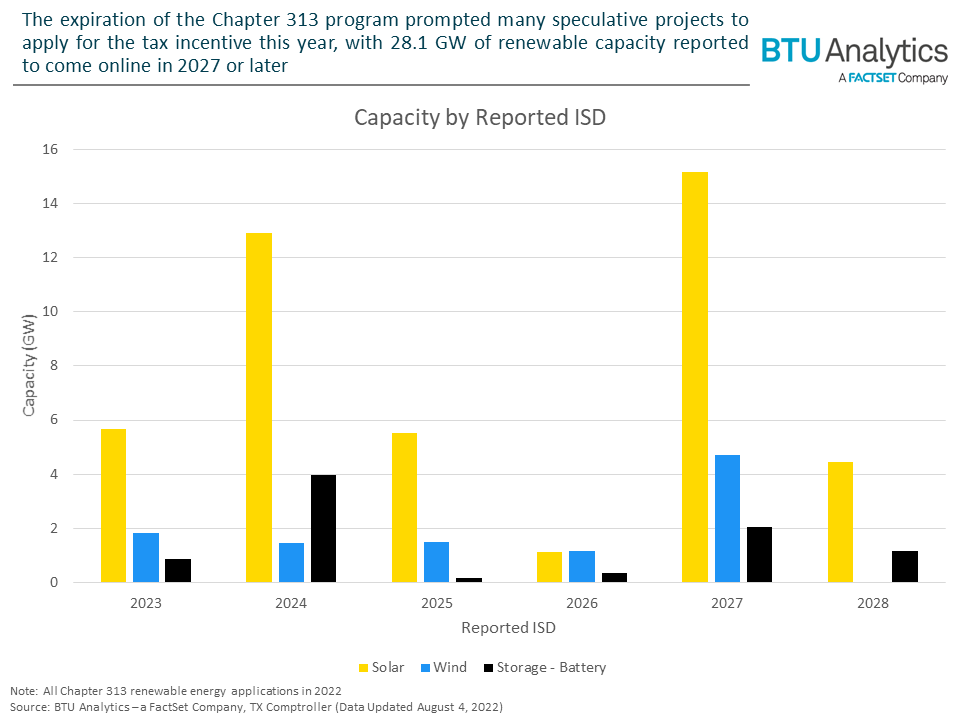The recent agreement between Senate Democrats to push forward the Inflation Reduction Act is welcome news to renewable energy developers. Among other things, the bill ensures that projects that produce electricity with zero emissions and start construction before 2033 will be eligible for production tax credits (PTCs) and investment tax credits (ITCs). Current legislation requires a project to begin construction by January 1, 2025 in order to receive either a PTC or ITC. If the bill passes and the construction start deadline is effectively pushed back, it will give renewable energy developers additional time to take these tax credits into account when building new projects. However, while these national tax credits have received extensions, Texas’ own tax incentive program, which has been used to build energy and manufacturing facilities, is set to expire in December 2022. Today’s Energy Market Insight will explore how developers have responded to the approaching expiration of Texas’ tax incentive program.
In 2001, the state of Texas enacted Chapter 313 of the tax code to incentivize business development within the state. The tax code allows for individual school districts to offer a ten-year limitation of the appraised property value for qualifying facilities. In exchange for this value limitation, which results in paying less property taxes, the business agrees to build their new facility within the school district, thereby bringing new jobs to the area. While this program has had its deadline extended in the past, no bill that would have extended the life of the program was passed by the Texas Legislature in 2021. This set the program’s expiration date for December 2022, resulting in the program seeing the most applications it has ever seen in a calendar year.

So far, the program has received 395 applications this year, which is more than all of 2019, 2020, and 2021 combined. In addition, 238 of this year’s applications were filed in the month of May alone. This is most likely due to the Texas Comptroller recommending that companies interested in the program submit their applications by June 1, as a project needs its application for the Chapter 313 program to be approved before December 2022 for it to be considered a legacy Chapter 313 agreement.
Furthermore, out of the 395 applications received so far, 279 were for renewable energy facilities. While 42% of the capacity associated with these renewable facilities is scheduled to come online in either 2023 or 2024, it is reported that 43%, or 28.1 GW, will come online in either 2027 or 2028.

Even though the projects with a reported ISD in 2027 or 2028 are still highly speculative at this point, clean energy projects that get an approved Chapter 313 agreement have a maximum of five years to make an agreed upon investment. Only once that investment is secured will they then qualify for the appraised value limitation. While this helps explain the sharp uptick for 2027 and 2028 facilities, these capacities are likely overstated. The average capacity of the solar projects installed in Texas during the last two years was 173 MW compared to an average of 270 MW for the proposed Chapter 313 projects. This difference is likely to be cut down in the future though, as after the December 2022 expiration date, projects with agreements will only be able to amend their capacities down, not up.
While it’s unclear how many applications will be approved, we can still get a sense of which zones the region’s developers are targeting in their mid-term plans.

While the map above shows developers will continue to target ERCOT West, it also shows a pivot toward ERCOT North. Currently, ERCOT North makes up only about 15% of installed solar capacity. However, future development plans show the North zone outstripping development in the West, with nearly 15 GW of solar applications seeking Chapter 313 approval.
The expiration of Chapter 313 is another illustration of how government incentives influence developer decision making. While this particular development is limited to Texas, expect coming changes in federal incentives to influence the path of the energy transition, especially for emerging technologies, like hydrogen, carbon capture, and direct air capture. Be sure to look out for future Energy Market Insights, as BTU will continue to cover this topic as it develops.









